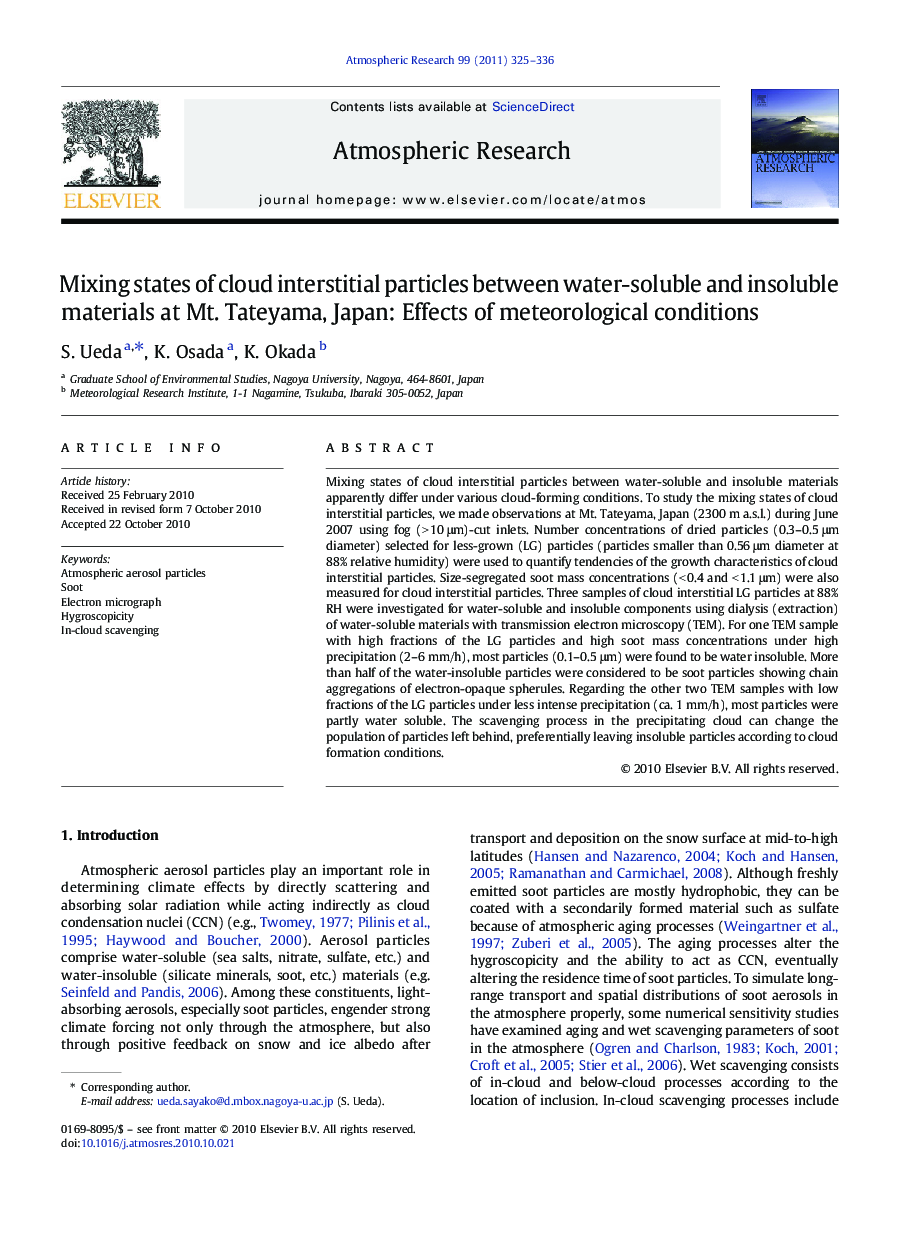| کد مقاله | کد نشریه | سال انتشار | مقاله انگلیسی | نسخه تمام متن |
|---|---|---|---|---|
| 4450561 | 1311706 | 2011 | 12 صفحه PDF | دانلود رایگان |

Mixing states of cloud interstitial particles between water-soluble and insoluble materials apparently differ under various cloud-forming conditions. To study the mixing states of cloud interstitial particles, we made observations at Mt. Tateyama, Japan (2300 m a.s.l.) during June 2007 using fog (> 10 μm)-cut inlets. Number concentrations of dried particles (0.3–0.5 μm diameter) selected for less-grown (LG) particles (particles smaller than 0.56 μm diameter at 88% relative humidity) were used to quantify tendencies of the growth characteristics of cloud interstitial particles. Size-segregated soot mass concentrations (< 0.4 and < 1.1 μm) were also measured for cloud interstitial particles. Three samples of cloud interstitial LG particles at 88% RH were investigated for water-soluble and insoluble components using dialysis (extraction) of water-soluble materials with transmission electron microscopy (TEM). For one TEM sample with high fractions of the LG particles and high soot mass concentrations under high precipitation (2–6 mm/h), most particles (0.1–0.5 μm) were found to be water insoluble. More than half of the water-insoluble particles were considered to be soot particles showing chain aggregations of electron-opaque spherules. Regarding the other two TEM samples with low fractions of the LG particles under less intense precipitation (ca. 1 mm/h), most particles were partly water soluble. The scavenging process in the precipitating cloud can change the population of particles left behind, preferentially leaving insoluble particles according to cloud formation conditions.
Research Highlights
► Cloud interstitial aerosol particles were observed at Mt. Tateyama in Japan.
► During higher precipitation, most interstitial particles were soot particles.
► Partly water-soluble particles were dominant during low precipitation.
► In-cloud scavenging can change the population of particles left behind.
Journal: Atmospheric Research - Volume 99, Issue 2, February 2011, Pages 325–336